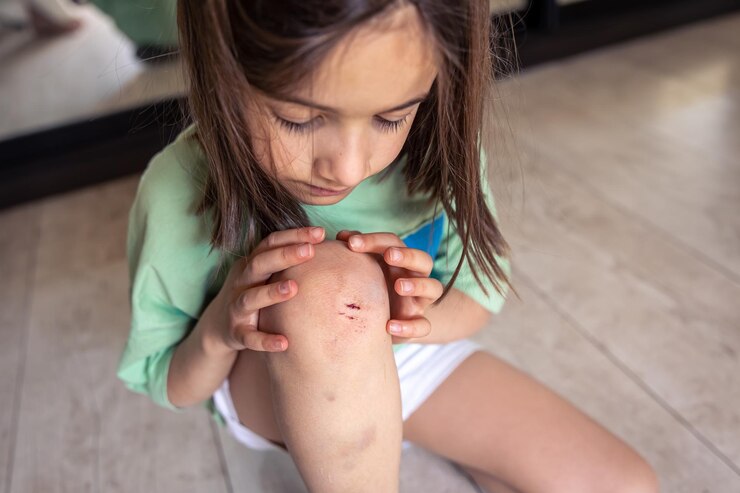
Self-injurious behaviors (SIBs) in children with autism can be incredibly distressing for parents and caregivers. Head banging, biting, scratching—these behaviors are tough to witness and even harder to understand. So many questions arise, why do they happen? What can you do about them?
But the good news? There’s hope! With the right strategies, you can reduce and manage these behaviors. Evidence-based approaches like Applied Behavior Analysis (ABA) offer proven solutions. In this blog, we’ll dive into why these behaviors occur, explore effective strategies, and show how ABA can help your child thrive.
Ready to find out more? Let’s get started!
What Are Self-Injurious Behaviors (SIBs)?
Self-injurious behaviors are actions where a person physically harms themselves. For children with autism, these behaviors might include:
- Head banging
- Biting their hands or arms
- Hitting or slapping themselves
- Scratching or pinching
These behaviors can vary in intensity, frequency, and triggers. Often, they are a form of communication or coping mechanism for children with autism, especially those who are non-verbal or have limited communication skills. But why do they occur?
Why Do Children with Autism Engage in Self-Injurious Behaviors?
Children with autism may engage in self-injury for several reasons, many of which are linked to how they process the world around them. Here are some of the common causes:
- Communication Difficulties: If a child struggles to communicate their needs, frustrations, or feelings, they may resort to self-injury as a way to express distress.
- Sensory Overload: Children with autism often experience heightened sensory sensitivity. Overstimulation from loud noises, bright lights, or certain textures may lead to self-injurious behaviors as a way to cope. Imagine a child at a noisy birthday party. The loud music, chatter, and flashing lights feel overwhelming and unable to cope with the sensory flood, they start hitting their head to block it out.
- Escape or Avoidance: Self-injury can sometimes be a way for children to avoid or escape demanding situations or tasks they find overwhelming. For instance, a child is asked to complete a difficult puzzle during therapy. Feeling frustrated and overwhelmed, they start biting their arm, hoping to be excused from the task.
- Seeking Sensory Input: For some children, self-injury provides sensory feedback that feels calming or satisfying, especially if they are under-stimulated. Read more about stimming here.
- Medical or Physical Discomfort: Pain or discomfort, such as headaches, dental pain, or gastrointestinal issues, might lead children to engage in self-injurious behaviors, as they may be unable to communicate their discomfort in other ways.
How Common Are SIBs in Autism?
Research shows that self-injurious behaviors are more common in children with autism than in the general population. According to a study published, up to 50% of individuals with autism will exhibit self-injurious behaviors at some point in their life. However, it’s important to note that the severity can differ widely from child to child.
Managing SIBs Through Applied Behavior Analysis (ABA)
As alarming as SIBs can be, they can be managed with effective, evidence-based strategies. Let’s take a closer look at them –
- Applied Behavior Analysis (ABA) is one of the most trusted, research-backed approaches to managing challenging behaviors in children with autism, like self-injurious behaviors (SIBs). But how does it work? ABA digs into the “why” — what’s really driving the behavior? Once we understand that, we can create personalized strategies to help.
For example, if a child is hitting or scratching themselves, is it because they’re frustrated, seeking attention, or avoiding a task? ABA helps uncover the reason and builds an intervention based on that. Besides, several ABA programs, such as those provided at Early Autism Ventures (EAV), offer parent training to help you implement behavior strategies at home. This training can give you the tools to respond to self-injurious behaviors effectively and consistently. It’s all about finding solutions that make sense for each person and aren’t that powerful!
- Functional Behavior Assessment (FBA) is a crucial part of ABA that helps uncover the reasons behind self-injurious behaviors (SIBs). Is the child trying to avoid something, like a difficult task? Or maybe they’re seeking sensory stimulation?
By answering these questions, the FBA allows us to get to the root of the behavior. Once we know the reason, we can create specific interventions to reduce or even replace the SIB with healthier, more appropriate actions. It’s all about understanding the child’s needs and responding in a way that works for them.
- In ABA, one of the most effective tools is positive reinforcement — rewarding desirable behaviors to encourage them. Research consistently shows that positive reinforcement can lead to lasting behavioral changes, especially when tailored to the child’s specific needs.
For instance, imagine a child is hitting their head to get attention. Through ABA, we teach the child a more appropriate way to seek that attention, like tapping a caregiver’s arm or saying a word.
Once they do this, we immediately reward them with positive attention — maybe a smile, praise, or a hug. Studies have shown that using these reinforcement strategies can significantly reduce challenging behaviors while empowering children to communicate their needs in healthier ways.
By reinforcing these alternative behaviors, the child learns that they can get what they want without engaging in self-injury. Isn’t it amazing how such small shifts can make a big difference? Research further supports the efficacy of ABA in reducing SIBs! In fact, a 2019 study showed significant reductions in self-injurious behaviors through tailored ABA interventions.
- For children who struggle with self-injury due to communication difficulties, Functional Communication Training (FCT) can truly be life-changing. FCT focuses on giving children alternative ways to express their needs, which can significantly reduce frustration and self-harm. Imagine a child who can’t communicate when they’re hungry, upset, or overwhelmed — they may turn to self-injury out of sheer frustration.
With FCT, they can learn to use tools like picture cards, sign language, or speech devices to convey those feelings instead. In fact, according to the American Speech-Language-Hearing Association (ASHA), these alternative forms of communication (AAC) dramatically decrease self-injurious behaviors by giving children the power to express themselves in safer, more productive ways. Isn’t it incredible how teaching a child to communicate can completely transform their world?
- Environmental modifications, such as creating an autism-friendly environment, can be a game-changer when it comes to reducing self-injurious behaviors. By making simple adjustments, you can minimize the triggers that lead to sensory overload and frustration. For example, if a child becomes overwhelmed by loud noises or visual clutter, you might consider:
- Reducing background noise and keeping spaces organized
- Offering noise-canceling headphones to soften overwhelming sounds
- Creating sensory-friendly areas with calming features like soft lighting, soothing textures, or cozy, quiet corners
These small modifications can have a big impact, helping children feel more comfortable and less likely to engage in self-injury. And when ABA strategies are used consistently — at home, in therapy, and at school — the likelihood of reducing SIBs increases significantly. It’s all about designing an environment that supports their unique sensory needs. And doesn’t that sound like a great, yet easy way to help them thrive?
- Medical Intervention is one of the strongest pillars when it comes to managing self-injurious behaviors in children with autism. SIBs can sometimes be linked to underlying medical issues, such as gastrointestinal problems, sleep disorders, or chronic pain. If your child seems to be in discomfort or experiencing health issues, it’s crucial to consult with their pediatrician or a specialist. Treating these underlying medical concerns can often reduce or even eliminate self-injury.
At Early Autism Ventures (EAV), our autism care experts can guide you through this process. We work closely with families to help identify potential medical triggers and connect you with the right specialists, whether it’s a gastroenterologist, sleep expert, or other healthcare provider. By addressing the root causes, we aim to not only improve your child’s health but also help reduce behaviors driven by discomfort.
Having the right support makes all the difference, and we’re here to help you every step of the way.
Finding the Right Autism Care Provider: You Are Not Alone
While self-injurious behaviors in children with autism can feel daunting, remember that progress is possible. With the right combination of ABA, communication strategies, and environmental changes, many families have successfully reduced or eliminated these behaviors. You can start by reaching out to autism specialists near you, like EAV, where we have experienced and trained ABA therapists.
Remember to celebrate every small victory and stay consistent with your strategies. Your love, patience, and dedication are the most powerful tools for helping your child thrive. With evidence-based approaches like ABA and the support of a caring team, you can make a meaningful difference in your child’s life.
Have questions? Need guidance? Reach out to us today for a FREE consultation. Our trained and compassionate experts are ready to help you navigate your child’s journey and ensure they reach their full potential!



